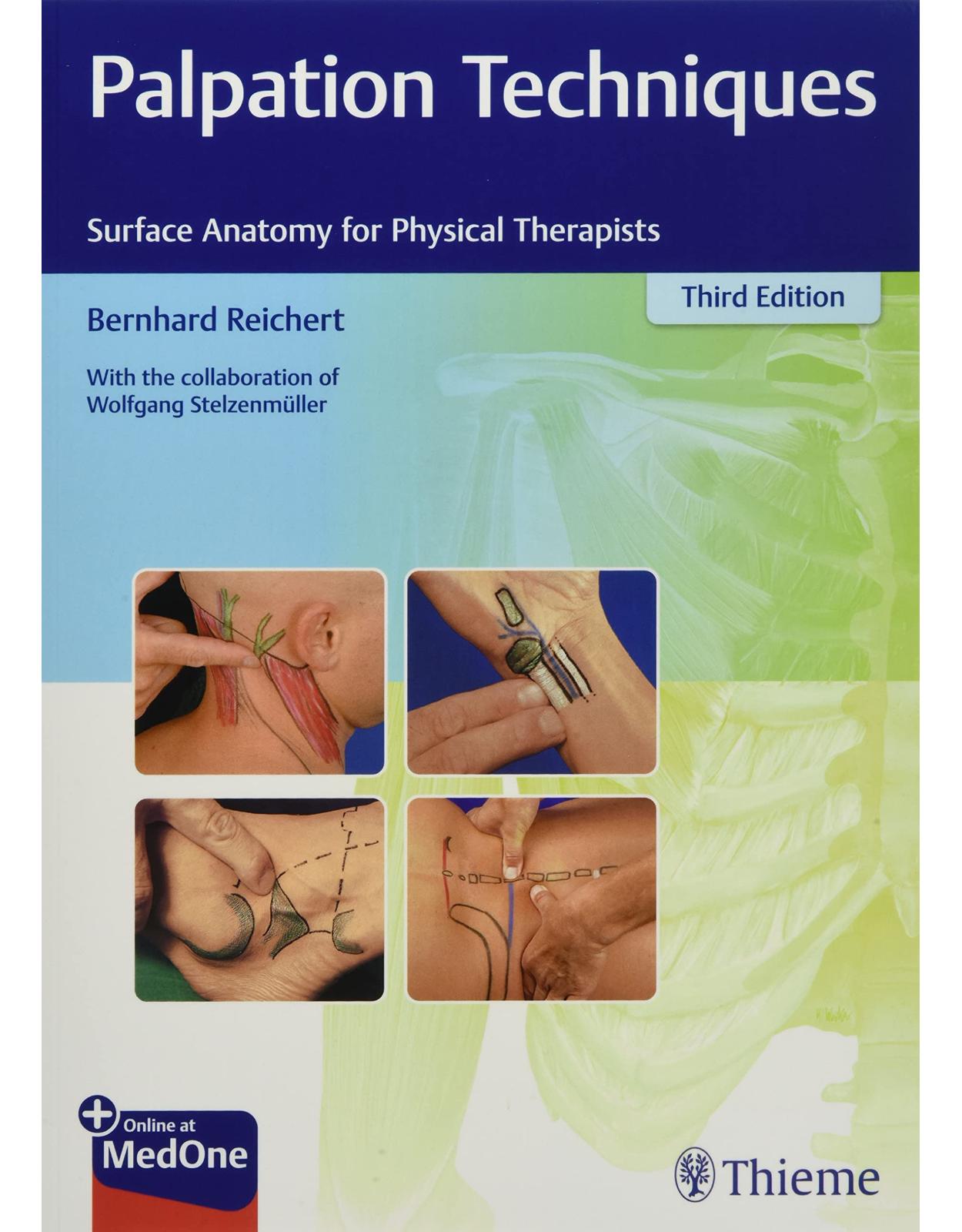
Palpation Techniques
Livrare gratis la comenzi peste 500 RON. Pentru celelalte comenzi livrarea este 20 RON.
Disponibilitate: La comanda in aproximativ 4 saptamani
Editura: Thieme
Limba: Engleza
Nr. pagini: 426
Coperta: Paperback
Dimensiuni: 17.45 x 2.74 x 28.88 cm
An aparitie: 26 May 2021
Description:
This completely updated third edition of the award-winning Palpation Techniques is a beautifully illustrated guide with clear step-by-step descriptions that teach readers how to identify and distinguish between a multitude of underlying body structures, based mainly on palpation alone. A unique graphic technique using detailed drawings of muscles, bones, and tendons directly on the skin, which come alive in almost 900 full-color photographs along with complementary color illustrations, provides a solid understanding of the functional significance of each anatomic region. The previous edition introduced palpation techniques for the shoulder and included new photos and illustrations for the hand, hip, and foot. This third edition is upgraded with a chapter on the abdominal area and additional subchapters on further starting positions and palpation techniques of the shoulder, elbow, and hip/groin. Many new illustrations accompany these new sections.
This book includes complimentary access to a digital copy on https://medone.thieme.com.
Readers will learn how to use:
Palpation during physical examination to localize painful, injured structures (provocative palpation)
Joints as critical landmarks in carrying out tests and guiding manual therapy techniques
Palpation of peripheral nerves to localize and assess sources of dysfunction and pain
Deep soft-tissue palpation to relieve musculoskeletal pain
This outstanding book will enable physical therapy and osteopathy practitioners and students to refine their knowledge of practical anatomy further and thus optimize patient care.
Table of Contents:
1 Basic Principles
1.1 Why Do Clinicians Need Surface Anatomy?
1.2 What Is Understood by Surface Anatomy in this Book?
1.3 When Can Surface Anatomy Be Used?
1.3.1 Physical Therapy Assessment
1.3.2 Basic Principles of Regional or Local Treatment
1.4 Workflow for Palpation
1.4.1 Objective and Location
1.4.2 The Reliable Result
1.4.3 Central Aspects of the Procedure
1.4.4 Pressure Applied during Palpation
1.5 Palpatory Techniques
1.5.1 Palpating the Skin
1.5.2 Palpating Bony Edges
1.5.3 Palpating Bony Prominences
1.5.4 Palpating Muscle Bellies
1.5.5 Palpating the Edge of Muscles
1.5.6 Palpating Tendons
1.5.7 Palpating Ligaments
1.5.8 Palpating Capsules
1.5.9 Palpating Bursae
1.5.10 Palpating Peripheral Nerves
1.5.11 Palpating Blood Vessels (Arteries)
1.6 Palpation Aids
1.6.1 Guiding Structures
1.6.2 Connecting Lines
1.6.3 Supporting Measures for Confirming a Palpation
1.6.4 Marking Structures
1.6.5 Starting Positions for Practice (Practice SPs)
2 Shoulder Complex
2.1 Introduction
2.1.1 Significance and Function of the Shoulder Region
2.1.2 Common Applications for Treatment in this Region
2.1.3 Required Basic Anatomical and Biomechanical Knowledge
2.2 General Orientation — Posterior
2.2.1 Summary of the Palpatory Process
2.2.2 Topographical Position of the Scapula
2.3 Local Palpation — Posterior
2.3.1 Overview of the Structures to be Palpated
2.3.2 Summary of the Palpatory Process
2.3.3 Palpation of Individual Structures
2.4 Local Palpation — Lateral
2.4.1 Overview of the Structures to be Palpated
2.4.2 Summary of the Palpatory Process
2.4.3 Palpation of Individual Structures
2.5 General Orientation — Anterior
2.5.1 Starting Position
2.5.2 Supraclavicular and Infraclavicular Fossae
2.6 Local Palpation — Anteromedial
2.6.1 Overview of the Structures to be Palpated
2.6.2 Summary of the Palpatory Process
2.6.3 Palpation of Individual Structures
2.6.4 Tips for Assessment and Treatment
2.7 Local Palpation—Anterolateral
2.7.1 Overview of the Structures to be Palpated
2.7.2 Summary of the Palpatory Process
2.7.3 Palpation of Individual Structures
3 Elbow Complex
3.1 Introduction
3.1.1 Significance and Function of the Elbow Complex
3.1.2 Common Applications for Treatment in this Region
3.1.3 Required Basic Anatomical and Biomechanical Knowledge
3.2 General Orientation — Anterior
3.2.1 Boundaries of the Cubital Fossa
3.3 Local Palpation — Anterior
3.3.1 Overview of the Structures to be Palpated
3.3.2 Summary of the Palpatory Process
3.3.3 Palpation of Individual Structures
3.3.4 Neurovascular Bundle
3.3.5 Proximal Radioulnar Joint (PRUJ)
3.3.6 Tips for Assessment and Treatment
3.4 Local Palpation — Medial
3.4.1 Overview of the Structures to be Palpated
3.4.2 Summary of the Palpatory Process
3.4.3 Palpation of Individual Structures
3.4.4 Differentiation in the Presence of Epicondylitis
3.4.5 Tips for Assessment and Treatment
3.5 Local Palpation — Lateral
3.5.1 Summary of the Palpatory Process
3.5.2 Locating the Most Important Osseous Structures
3.5.3 Locating the Muscles and their Insertions
3.5.4 Locating the Lateral Insertion Tendinopathies
3.5.5 Tips for Assessment and Treatment
3.5.6 Palpation in the Radial Tunnel
3.6 General Orientation — Posterior Humerus
3.6.1 Summary of the Palpatory Process
3.6.2 Palpating Warmth and Swelling
4 Hand
4.1 Significance and Function of the Hand
4.1.1 Causes of the Diversity of Functions in the Hand
4.1.2 Common Applications for Treatment in this Region
4.1.3 Required Basic Anatomical and Biomechanical Knowledge
4.1.4 Axial Divisions of the Skeleton of the Hand into Columns and Their Clinical Significance
4.1.5 The Carpus
4.1.6 Kinematic and Kinetic Model of the Hand
4.1.7 Triangular Fibrocartilage Complex (TFC)
4.1.8 Construction of the Carpal Tunnel
4.1.9 Extensor Tendons and their Compartments
4.2 General Orientation — Dorsal
4.2.1 Summary of the Palpatory Process
4.2.2 Palpation of Individual Structures
4.2.3 Tips for Assessment and Treatment
4.3 Local Palpation of the Dorsal Soft Tissues
4.3.1 Summary of the Palpatory Process
4.3.2 Palpation of Individual Structures
4.3.3 Radial Nerve, Cephalic Vein, and Radial Artery
4.3.4 Tips for Assessment and Treatment
4.4 Local Palpation of the Dorsal Aspect of the Carpal Bones
4.4.1 Summary of the Palpatory Process
4.4.2 Carpal Bones in the Radial Column
4.4.3 Carpal Bones in the Central Column
4.4.4 Tips for Assessment and Treatment
4.4.5 Carpal Bones in the Ulnar Column
4.4.6 Tips for Assessment and Treatment
4.5 General Orientation — Palmar
4.5.1 Summary of the Palpatory Process
4.5.2 Edge of the Radius
4.6 Local Palpation of the Palmar Soft Tissues
4.6.1 Summary of the Palpatory Process
4.6.2 Palpation of Individual Structures
4.6.3 Summary of all Radial Structures
4.6.4 Summary of all Ulnar Structures
4.6.5 Tips for Assessment and Treatment
4.7 Local Palpation of the Palmar Aspect of the Carpal Bones
4.7.1 Summary of the Palpatory Process
4.7.2 Palpation of Individual Structures
4.7.3 Tips for Assessment and Treatment
5 Hip and Groin Region
5.1 Introduction
5.1.1 Lumbar-Pelvic-Hip Region
5.1.2 Functional Significance of the Pelvis and Hip Joint
5.1.3 Pathology and Common Applications for Treatment in this Region
5.1.4 Required Basic Anatomical and Biomechanical Knowledge
5.2 Local Palpation — Lateral
5.2.1 Overview of the Structures to be Palpated
5.2.2 Summary of the Palpatory Process
5.2.3 Palpation of Individual Structures
5.3 Local Palpation — Dorsal
5.3.1 Overview of the Structures to be Palpated
5.3.2 Summary of the Palpatory Process
5.3.3 Palpation of Individual Structures
5.4 Local Palpation — Anterior
5.4.1 Overview of the Structures to be Palpated
5.4.2 Summary of the Palpatory Process
5.4.3 Palpation of Individual Structures
6 Knee Joint
6.1 Introduction
6.2 Significance and Function of the Knee Joint
6.3 Pathological Conditions and Common Applications for Treatment
6.3.1 A Selection of Possible Pathologies
6.3.2 Common Assessment and Treatment Techniques
6.4 Required Basic Anatomical and Biomechanical Knowledge
6.4.1 Construction of the Femorotibial Joint
6.4.2 Construction of the Patellofemoral Joint
6.4.3 Proximal Tibiofibular Joint
6.4.4 Muscles of the Knee Joint
6.4.5 Neural Structures
6.5 Palpation for Warmth and Swelling
6.5.1 Palpating an Increase in Temperature
6.5.2 Palpating Edema
6.6 Local Palpation — Anterior
6.6.1 Summary of the Palpatory Process
6.6.2 Palpation of Individual Structures
6.6.3 Tips for Assessment and Treatment
6.7 Local Palpation — Medial
6.7.1 Summary of the Palpatory Process
6.7.2 Boundaries of the Joint Space
6.7.3 Medial Epicondyle of the Femur
6.7.4 Medial Gastrocnemius Tubercle
6.7.5 Anteromedial and Medial Soft Tissues
6.7.6 Tips for Treatment
6.8 Local Palpation — Lateral
6.8.1 Summary of the Palpatory Process
6.8.2 Palpation of Individual Structures
6.8.3 Tips for Assessment and Treatment
6.9 Local Palpation — Posterior
6.9.1 Summary of the Palpatory Process
6.9.2 Palpation of Individual Structures
6.9.3 Tips for Assessment and Treatment
7 Foot
7.1 Introduction
7.1.1 Significance and Function of the Foot
7.1.2 Special Characteristics of the Bony Construction
7.1.3 Features of the Nomenclature
7.1.4 Special Biomechanical Characteristics
7.1.5 Common Symptoms in the Foot
7.1.6 Required Basic Anatomical and Biomechanical Knowledge
7.2 Local Palpation of the Medial Border of the Foot
7.2.1 Summary of the Palpatory Process
7.2.2 Overview of the Structures to be Palpated
7.2.3 Position of the Medial Ligaments
7.2.4 Tips for Treatment
7.3 Palpation of the Lateral Border of the Foot
7.3.1 Summary of the Palpatory Process
7.3.2 Overview of the Structures to be Palpated
7.3.3 Tips for Assessment and Treatment
7.4 Local Palpation of the Dorsum of the Foot
7.4.1 Summary of the Palpatory Process
7.4.2 Overview of the Structures to be Palpated
7.4.3 Tips for Assessment and Treatment
7.5 Local Palpation of the Distal Posterior Leg
7.5.1 Summary of the Palpatory Process
7.5.2 Overview of the Structures to be Palpated
7.5.3 Borders of the Achilles Tendon
7.5.4 Insertion of the Triceps Surae
7.5.5 Palpation of the Tendon
8 Soft Tissues
8.1 Significance and Function of Soft Tissues
8.2 Common Applications for Treatment in this Region
8.3 Required Basic Anatomical and Biomechanical Knowledge
8.4 Summary of the Palpatory Process
8.4.1 Extent of the Palpation
8.4.2 Criteria for Palpation
8.5 Method and Techniques of the Palpatory Process
8.6 Starting Position
8.6.1 Difficult and Alternative Starting Positions
8.7 Palpation Techniques
8.7.1 Palpating the Surface of the Skin
8.7.2 Palpating the Quality of the Skin (Turgor)
8.7.3 Palpating the Consistency of Muscle (Assessment of Muscle Tension)
8.8 Tips for Assessment and Treatment
8.8.1 Differentiating between Tissues
8.8.2 Interpreting the Findings of Skin Surface Palpation
8.8.3 Interpreting the Skin Consistency (Turgor) Palpation Findings
8.8.4 Interpreting the Muscle Consistency (Tension) Palpation Findings
8.9 Examples of Treatment
8.9.1 Lumbar Functional Massage in Side-lying
8.9.2 Functional Massage of the Trapezius in Side-lying
9 Posterior Pelvis
9.1 Significance and Function of the Pelvic Region
9.2 Common Applications for Treatment in this Region
9.3 Required Basic Anatomical and Biomechanical Knowledge
9.3.1 Gender-based Differences
9.3.2 Coxal Bone
9.3.3 Sacrum
9.3.4 The Pelvic Ligaments
9.3.5 The Sacroiliac Joint
9.3.6 Sacroiliac Joint Biomechanics
9.3.7 Ligament Dynamization in the Sacroiliac Joint
9.4 Summary of the Palpatory Process
9.5 Palpatory Techniques for Quick Orientation on the Bones
9.5.1 Starting Position
9.6 Palpatory Procedures for Quick Orientation on the Muscles
9.6.1 Starting Position
9.7 Local Palpation Techniques
9.7.1 Summary of the Palpatory Procedure
9.7.2 Ilium—Iliac Crest
9.7.3 Ilium—Posterior Superior Iliac Spine (PSIS)
9.7.4 Sacrum—S2 Spinous Process
9.7.5 Sacrum—Median Sacral Crest
9.7.6 Sacrum—Insertion of the Multifidus
9.7.7 Sacrum—Sacral Hiatus
9.7.8 Sacrum—Sacrococcygeal Transition
9.7.9 Sacrum—Inferolateral Angles of the Sacrum
9.7.10 Sacrotuberous Ligament
9.7.11 Long Posterior Sacroiliac Ligament
9.8 Orienting Projections
9.8.1 Posterior Inferior Iliac Spine (PIIS)
9.8.2 Sacroiliac Joint Projection
9.8.3 Piriformis
9.8.4 Sciatic Nerve and the Gluteals
9.9 Tips for Treatment
10 Lumbar Spine
10.1 Significance and Function of the Lumbar Spine
10.1.1 Supporting the Weight of the Body
10.1.2 Spatial Alignment of the Upper Body
10.1.3 The Importance of Stability for Standing and Lifting
10.1.4 Movement in the Trunk
10.1.5 Development of Energy Needed for Locomotion
10.1.6 Junction between the Rigid and Mobile Vertebral Column
10.2 Common Applications for Treatment in this Region
10.3 Required Basic Anatomical and Biomechanical Knowledge
10.3.1 Anatomical Definitions
10.3.2 Shape of the Inferior Lumbar Vertebrae and Intervertebral Disks
10.3.3 Detailed Anatomy of Bony Structures
10.3.4 Detailed Anatomy of the Ligaments
10.3.5 Detailed Anatomy of the Muscles
10.3.6 Basic Biomechanical Principles
10.4 Overview of the Structures to be Palpated
10.5 Summary of the Palpatory Process
10.6 Starting Position
10.6.1 Positioning in the Frontal Plane
10.6.2 Positioning in the Transverse Plane
10.6.3 Difficult and Alternative Starting Positions
10.7 Palpation Techniques
10.7.1 Orienting Projections
10.7.2 Local Bony Palpation
10.8 Tips for Treatment
10.8.1 Research Findings on Reliable Lumbar Palpation
10.8.2 Test for Rotation (Transverse Vertebral Pressure)
10.8.3 Posteroanterior Segmental Joint Play
10.8.4 Palpation during Flexion and Extension Movements
10.8.5 Anteroposterior Segmental Joint Play
10.8.6 Local Segmental Mobility Using Coupled Movements
10.8.7 Training the Multifidus
11 Abdominal Region
11.1 Significance of the Region
11.2 Common Applications for Treatment in this Region
11.3 Required Knowledge (Topographic and Morphologic)
11.3.1 Boundaries of the Abdominal Wall
11.3.2 Regions of the Abdominal Wall
11.3.3 Deep and Superficial Abdominal Muscles
11.3.4 Organs of the Abdominopelvic Cavity
11.3.5 Anatomy of the Groin
11.4 Summary of the Palpatory Process
11.5 Overview of the Structures to be Palpated
11.5.1 Bony Structures
11.5.2 Orienting Projections
11.5.3 Muscles
11.5.4 Palpation of the Colon
11.5.5 Palpation of the Groin Region
11.6 Starting Position
11.6.1 Difficult and Supplementary SPs
11.7 Palpation of the Bony Structures
11.7.1 Preparation
11.7.2 Xiphoid Process
11.7.3 Costal Arch
11.7.4 Anterior Superior Iliac Spine (ASIS) and Inguinal Ligament
11.7.5 Pubic Symphysis
11.8 Orienting Projections
11.8.1 Epigastric Region
11.8.2 Lower Abdomen
11.8.3 Anterior Median Line
11.9 Muscles
11.9.1 Rectus Abdominis
11.9.2 Linea Semilunaris
11.9.3 Regional Subdivision of the Central Abdomen
11.10 Palpation of the Colon
11.10.1 Locating the Cecal Point
11.10.2 Locating the Ascending Point
11.10.3 Locating the Linear Point
11.10.4 Locating the Descending Point
11.10.5 Locating the Sigmoid Point
11.11 Palpation of the Groin Region
11.11.1 Technique and Expectations
11.11.2 Palpation of Inguinal Hernias
12 Thoracic Spine and Thoracic Cage
12.1 Significance and Function of the Thoracic Region
12.1.1 Protective Function
12.1.2 Supportive Function
12.1.3 Junction between the Cervical and Lumbar Spines
12.1.4 Respiration
12.1.5 How Does this Affect Palpation?
12.2 Common Applications for Treatment in this Region
12.3 Required Basic Anatomical and Biomechanical Knowledge
12.3.1 Functional Divisions in the Thoracic Spine
12.3.2 Anatomical Characteristics of the Thoracic Spine
12.3.3 Thorax
12.3.4 Thoracic Back Muscles
12.4 Overview of the Structures to be Palpated
12.5 Summary of the Palpatory Process
12.6 Starting Position
12.6.1 Difficult and Alternative Starting Positions
12.7 Posterior Palpation Techniques
12.7.1 Cervicothoracic Junction in the Sitting Starting Position
12.7.2 Cervicothoracic Junction in the Prone Starting Position
12.7.3 Tips for Assessment and Treatment
12.8 Anterior Palpation Techniques
12.8.1 Anterior Palpation in the Sitting Starting Position
12.8.2 Anterior Palpation in the Supine Starting Position
12.8.3 Thoracic Palpation in the Side-lying Starting Position
12.8.4 Tips for Assessment and Treatment
13 Cervical Spine
13.1 Significance and Function of the Cervical Spine
13.2 Common Applications for Treatment in this Region
13.3 Required Basic Anatomical and Biomechanical Knowledge
13.3.1 Sections of the Cervical Spine
13.3.2 Anatomy of the Lower Cervical Spine
13.3.3 Lower Cervical Spine Biomechanics
13.3.4 Anatomy of the Occiput and the Upper Cervical Spine
13.3.5 Ligaments of the Cervical Spine
13.3.6 Biomechanics of the Upper Cervical Spine
13.3.7 Posterior Muscles
13.3.8 Anterior and Lateral Muscles
13.3.9 Nerves and Blood Vessels
13.4 Overview of the Structures to be Palpated
13.5 Summary of the Palpatory Process
13.6 Starting Position
13.6.1 Difficult and Alternative Starting Positions
13.7 Posterior Palpation Techniques
13.7.1 Occiput
13.7.2 Suboccipital Fossa and Ligamentum Nuchae
13.7.3 C2 Spinous Process
13.7.4 Spinous Processes of the Lower Cervical Spine
13.7.5 Facet Joints
13.7.6 Muscles, Suboccipital Nerves, and Blood Vessels
13.8 Tips for Assessment and Treatment
13.8.1 Functional Massage of the Trapezius in Supine Position
13.8.2 Test for the Alar Ligaments
13.8.3 Identifying the Level of Chronically Irritated Intervertebral Disks
13.8.4 Functional Massage
13.9 Lateral Palpation Techniques
13.9.1 Angle of the Mandible
13.9.2 C1 Transverse Process
13.9.3 C2 and C3 Transverse Processes
13.9.4 Boundaries of the Posterior Triangle of the Neck
13.9.5 Occipital Triangle of the Neck
13.9.6 Supraclavicular Triangle of the Neck
13.10 Anterior Palpation Techniques
13.10.1 Anatomy
14 Head and Jaw
14.1 Introduction
14.1.1 Significance and Function of the Temporomandibular Joint
14.1.2 Common Applications for Treatment in this Region
14.1.3 Required Basic Anatomical and Biomechanical Knowledge
14.2 Anatomy of the Bony Skull
14.2.1 Dividing the Head into Regions
14.2.2 Overview of the Frontal Aspect of the Viscerocranium
14.3 Palpation of the Bony Skull
14.3.1 Frontal Aspect of the Viscerocranium
14.3.2 Lateral Aspect of the Skull
14.4 The Jaw—Temporomandibular Joints
14.4.1 Required Basic Knowledge of Topography and Morphology
14.4.2 Biomechanics of the Temporomandibular Joint
14.4.3 Assessing Deviations from the Mid-line during Mouth Opening
14.5 Palpating the Temporomandibular Joints
14.5.1 Overview of the Structures to be Palpated
14.5.2 Summary of the Palpatory Process
14.5.3 Assessment of the Clicking Phenomenon during Active Mouth Opening
14.6 Palpatory Examination of the Jaw Muscles
14.6.1 Overview of the Structures to be Palpated
14.6.2 Summary of the Palpatory Process
14.6.3 Masseter
14.6.4 Tips for Assessment and Treatment
14.6.5 Medial Pterygoid Muscle
14.6.6 Lateral Pterygoid Muscle
14.6.7 Temporalis
14.6.8 Anterior and Posterior Bellies of the Digastric
Index
| An aparitie | 26 May 2021 |
| Autor | Bernhard Reichert, Wolfgang Stelzenmüller, Karen Leube |
| Dimensiuni | 17.45 x 2.74 x 28.88 cm |
| Editura | Thieme |
| Format | Paperback |
| ISBN | 9783132429871 |
| Limba | Engleza |
| Nr pag | 426 |
| Versiune digitala | DA |

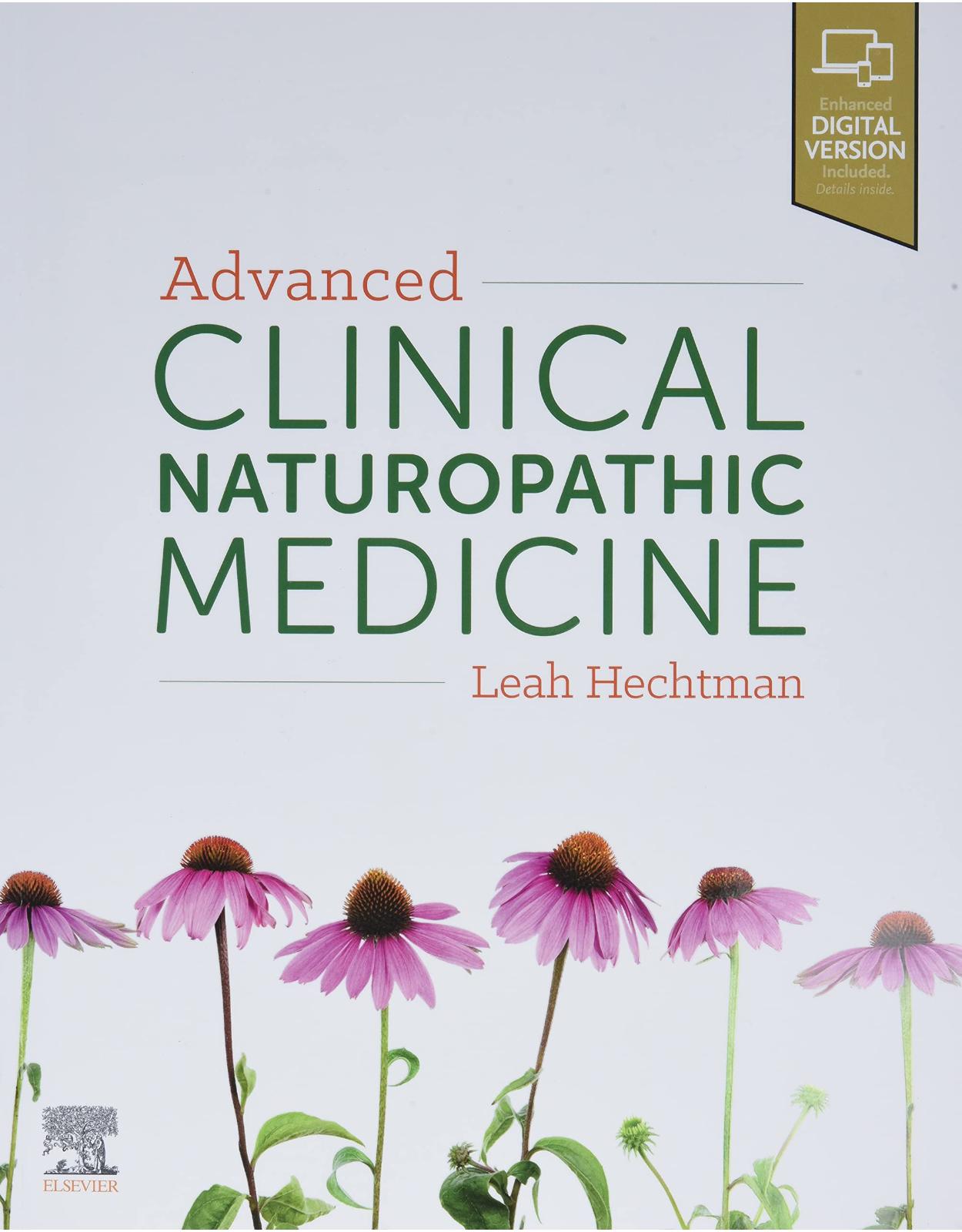
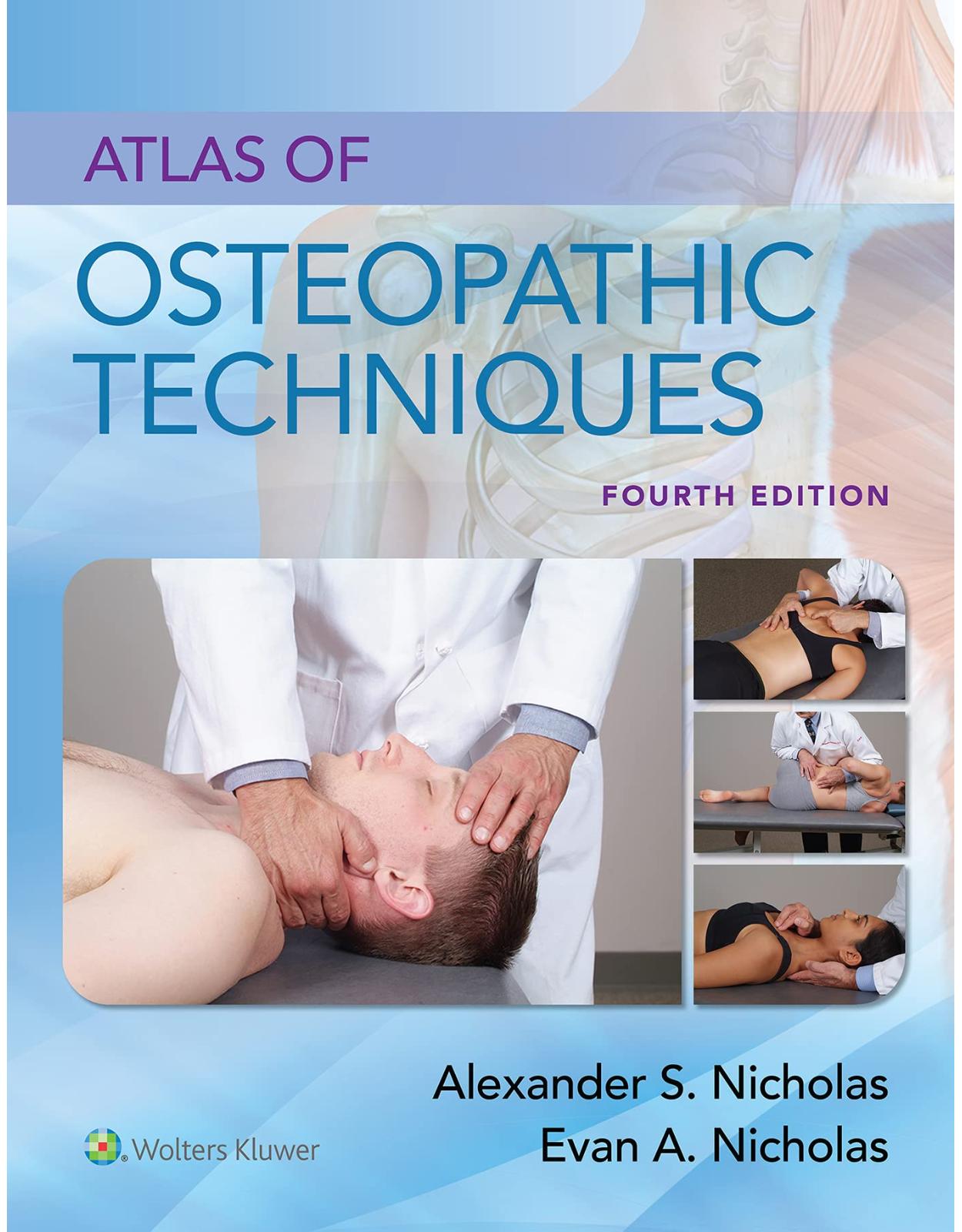
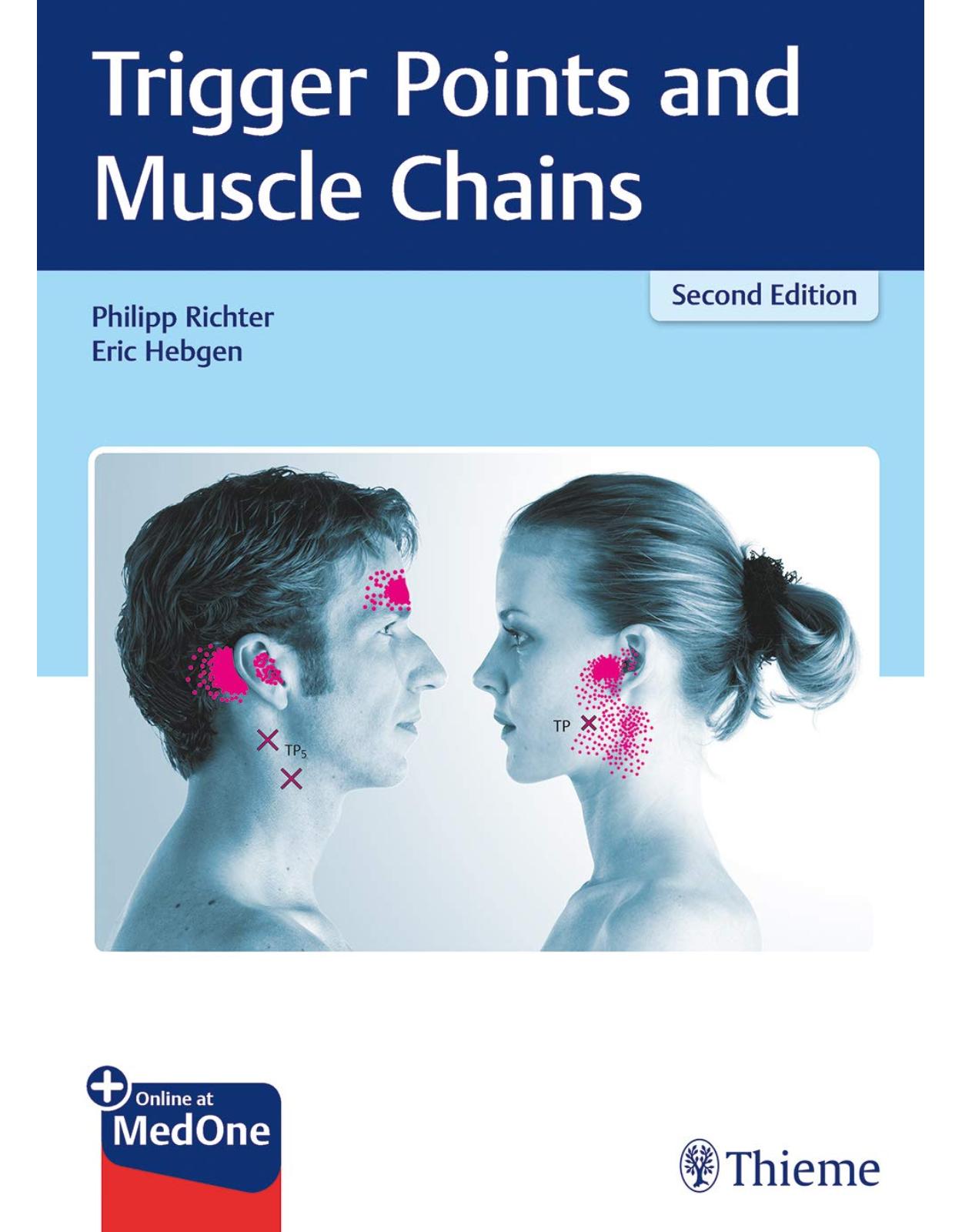

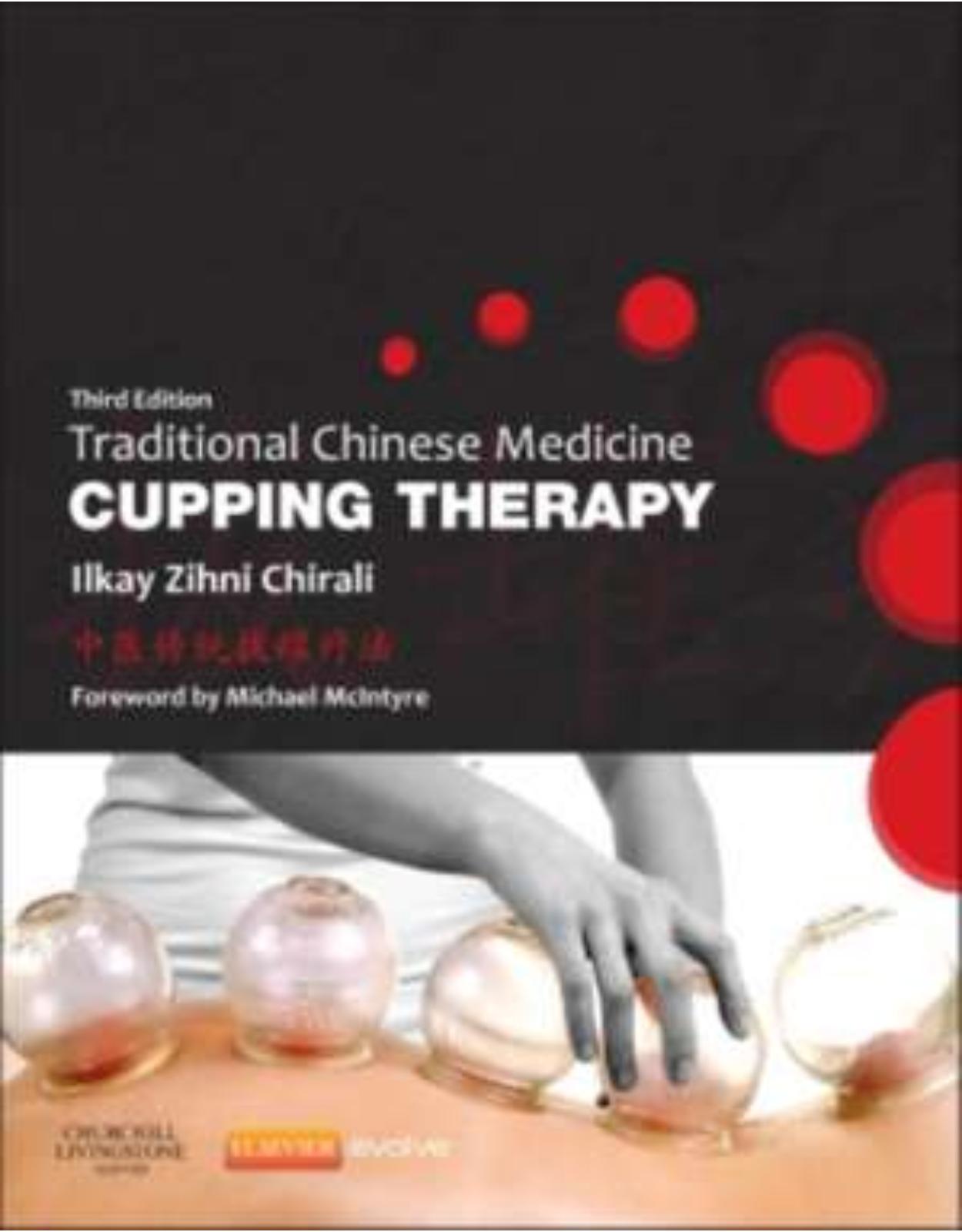
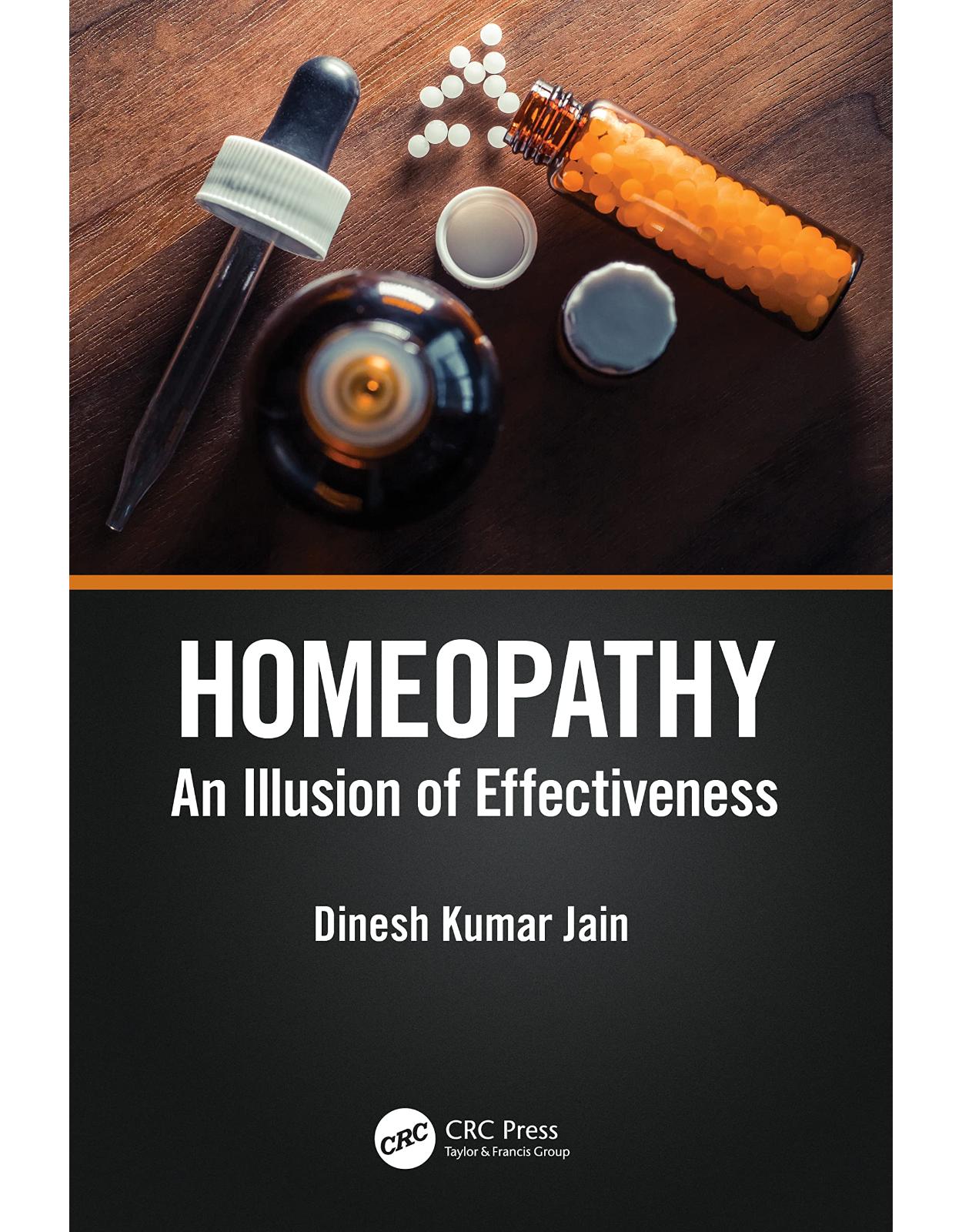
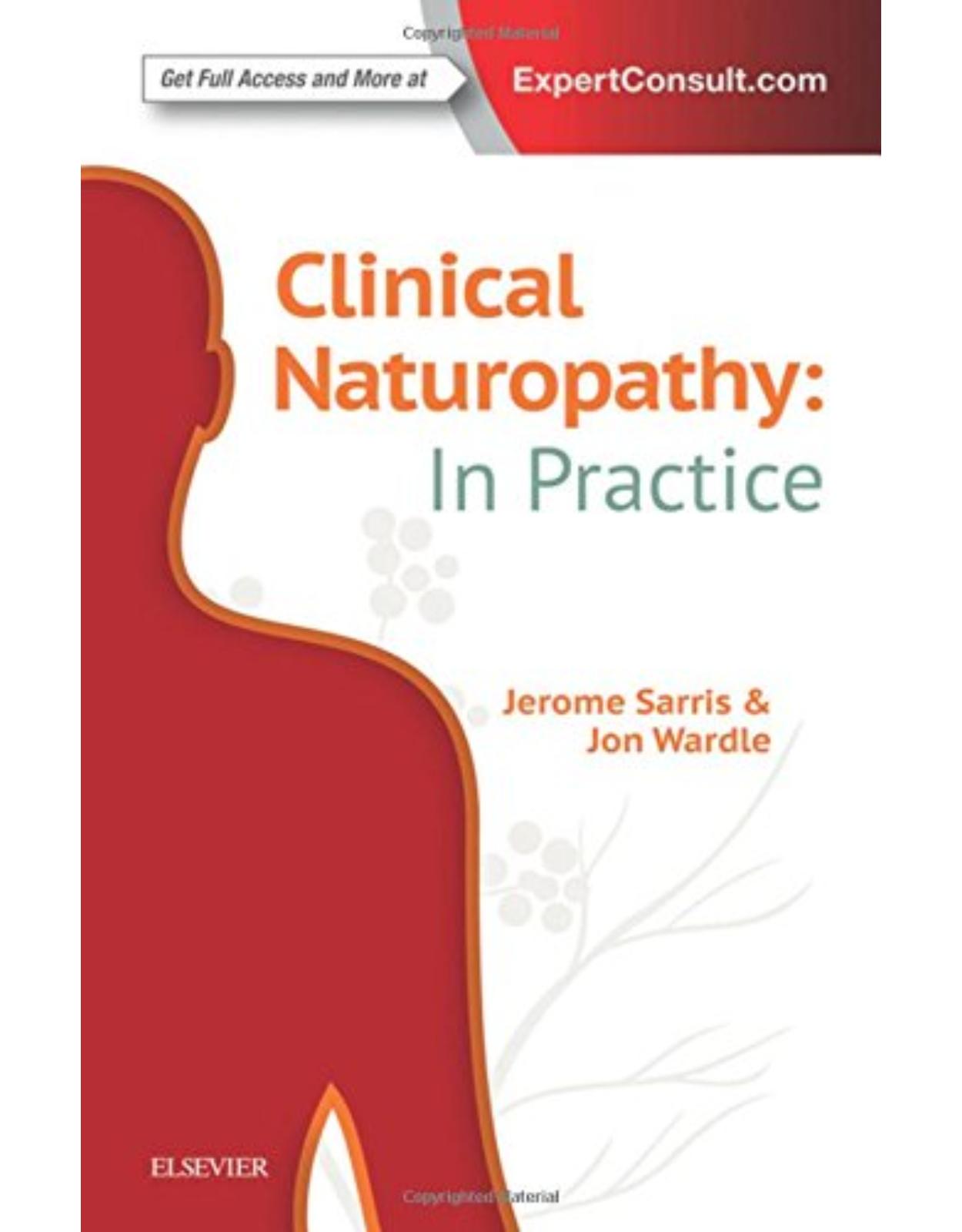
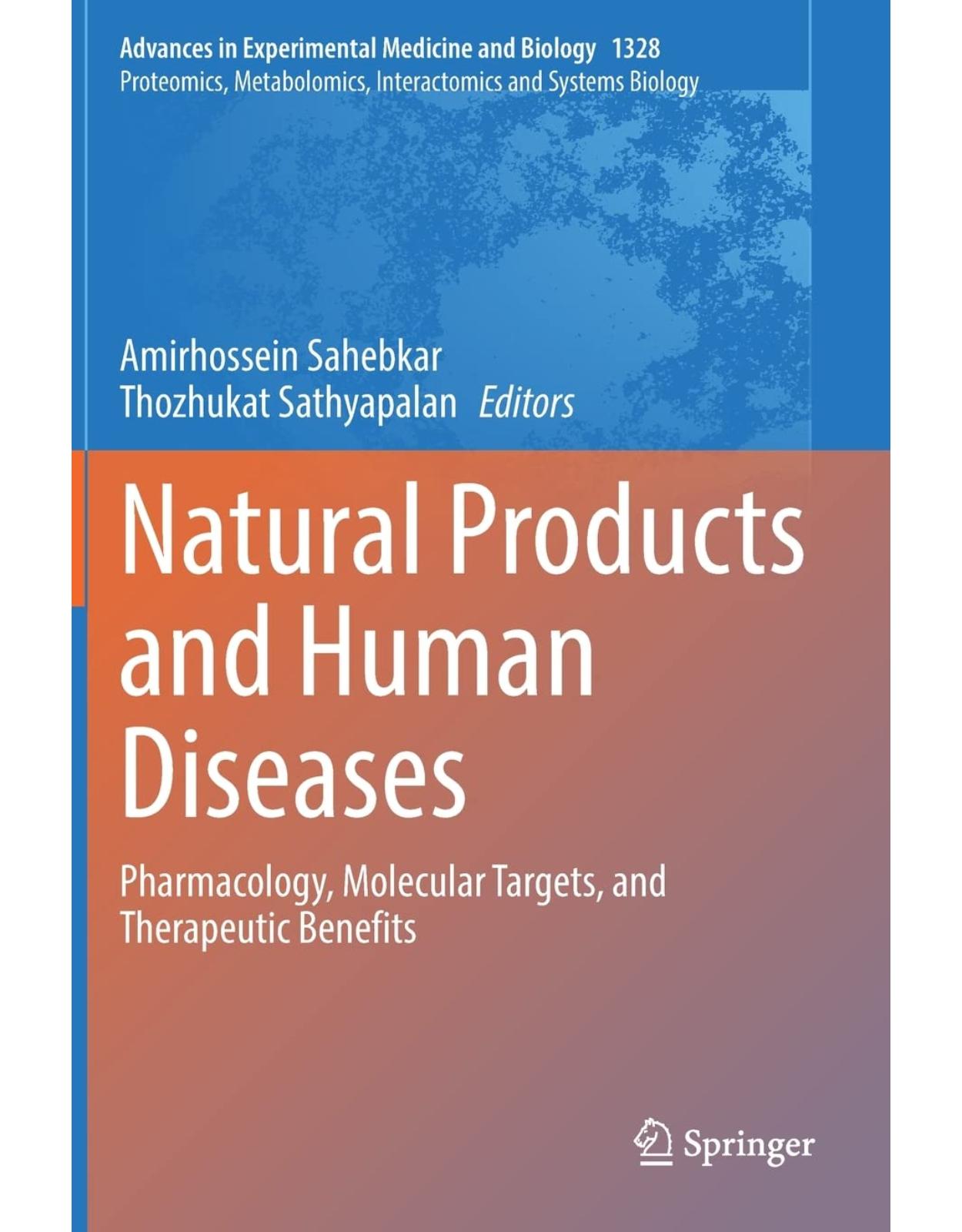
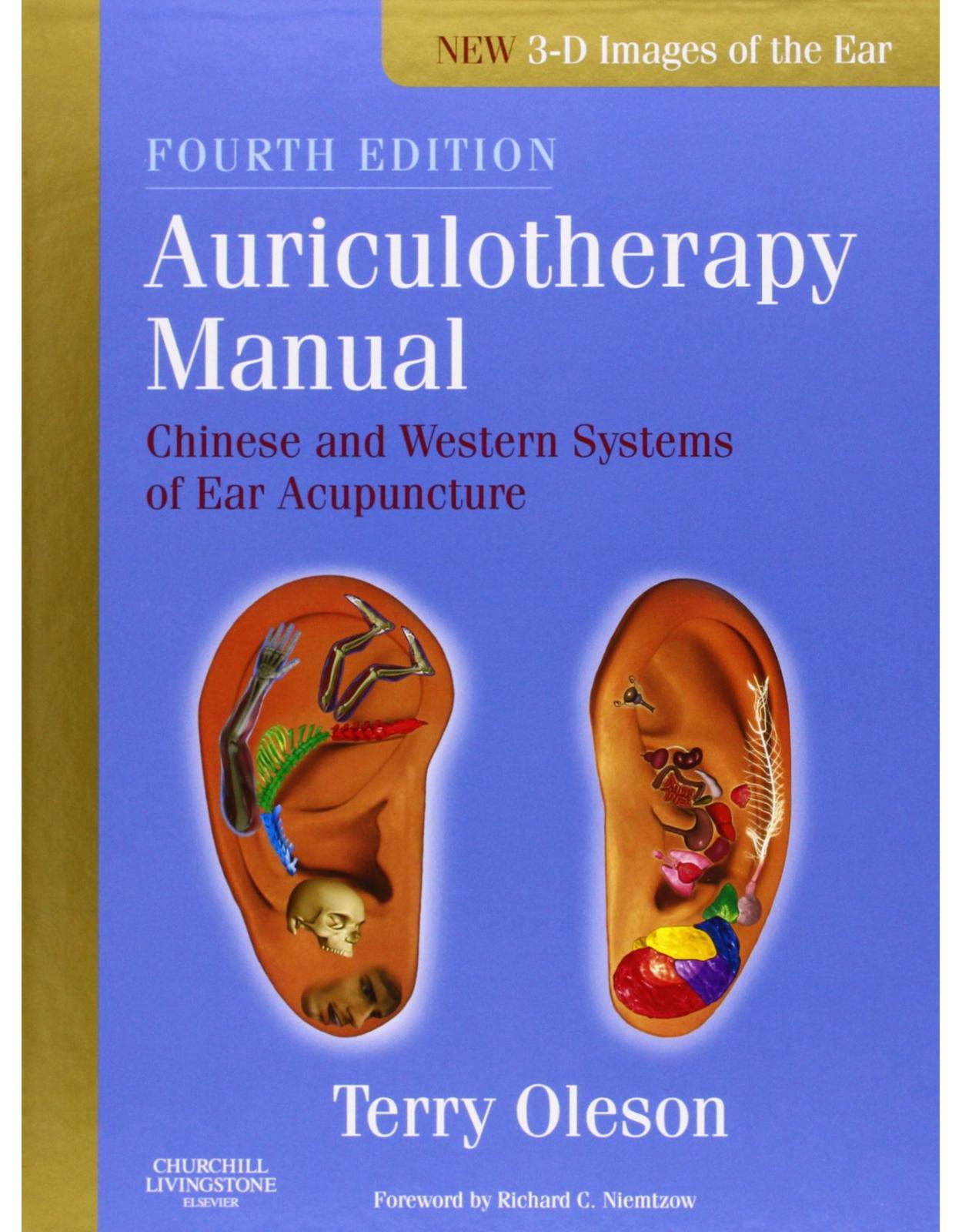


Clientii ebookshop.ro nu au adaugat inca opinii pentru acest produs. Fii primul care adauga o parere, folosind formularul de mai jos.